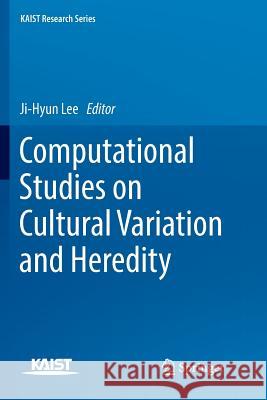Computational Studies on Cultural Variation and Heredity » książka
topmenu
Computational Studies on Cultural Variation and Heredity
ISBN-13: 9789811340871 / Angielski / Miękka / 2019 / 225 str.
Kategorie:
Kategorie BISAC:
Wydawca:
Springer
Seria wydawnicza:
Język:
Angielski
ISBN-13:
9789811340871
Rok wydania:
2019
Wydanie:
Softcover Repri
Ilość stron:
225
Waga:
0.33 kg
Wymiary:
23.39 x 15.6 x 1.24
Oprawa:
Miękka
Wolumenów:
01
Dodatkowe informacje:
Wydanie ilustrowane











